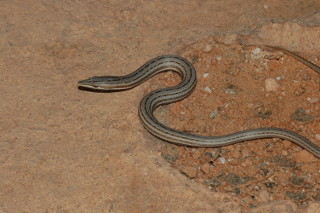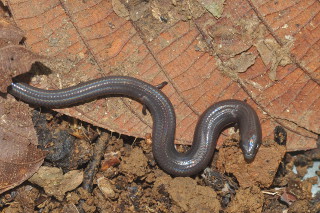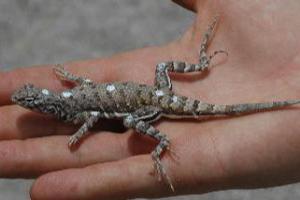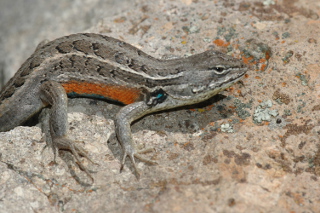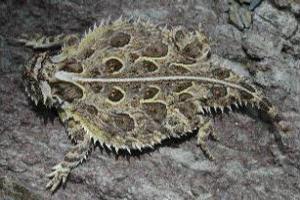
Variation in body shape is ubiquitous - any every clade of animals has variation in body shape - and our lab is interested in how this variation evolves and its functional implications. It is expected that animals that look different accomplish tasks needed for survival differently, and this may, in turn, affect the niches that they fill. In many vertebrate clades, and particularly squamates (lizards and snakes), there is an astounding range of body shapes that have evolved, ranging from typical lizard-like to snake-like at one extreme, and stocky at the other extreme. We are interested in how changes in body parts, including vertebrae have led to this diversity in body shapes. We are also interested in studying how animals with a diversity of body shapes move during locomotion, and in different contexts.
Our work indicates that Phrynosomatine lizards, which have body shapes ranging from slender lizard-like to very stocky (with the horned lizards) have coevolved a number of functional and ecologically-related traits with their body shape. Stockier species tend to have larger defensive horns on their heads, run slower, and specialize more on ants, a prey type that moves slowly, than their more slender relatives. Studyign these lizards, and also Lerista skinks from Australia, we are able to sample the entire continuum from snake-like to very stocky, including many transitional or intermediate forms. Here, our work on evolution of body form shows that these two clades have evolved their body parts differently, meanign that stockiness is not simply the opposite of being snake-like. Our functional work with high-speed video indicates that in all of these species, the longer the hindlimbs, the faster they run, and so locomotor speed decreases as the animals get more snake like or more stocky. In addition, while there is a strong relationship in Lerista between elongation of the body and axial bending during locomotion, there is no such relationship in the Phrynosomatines. This is likely because, while Lerista have incredible variation in the number of trunk vertebrae, the Phrynosomatines have almost none.
We are currently exploring these problems in more detail on a number of fronts. First, many snake-like lizards are fossorial, and so we are studyign burrowing performance as well as surface locomotion performance. Preliminary data suggest that snake-like animals have very different kinematics when they are burrowing versus 'running'. We are also studying the convergent evolution of snake-like body shapes. In squamates, there are at least six clades that have evovled snake-like body shapes and have multiple transitional forms between five fingered and toed lizard-like species and limbless, snake-like species. We are interested in testing whether a snake-like body shape has evolved following the same evolutionary pathways in each of these clades. Preliminary results show that this is not the case, and also suggest that there is a large amount of variation in what it means to be snake-like, despite the superficially simplified body shape.
We are also working on an NSF-funded project studying body shape evolution in the Philippines skinks Brachymeles, together with Cam siler, Gunter Wagner, and Duncan Irschick. There is strong phylogenetic evidence that these skinks have lost their limbs and then re-evolved them, violating Dollo's Law. We are testing hypotheses about why this would happen functionally, and how it has happened developmentally. Our lab is leading the functional component of this work. We are testing whether there is a trade-off between burrowing and running performance, where species with well-developed limbs might be able to run well but burrow poorly, and vice versa. We predict that re-evolved limbs may allow species to break this trade-off, essentially being good burrowers and runners.

